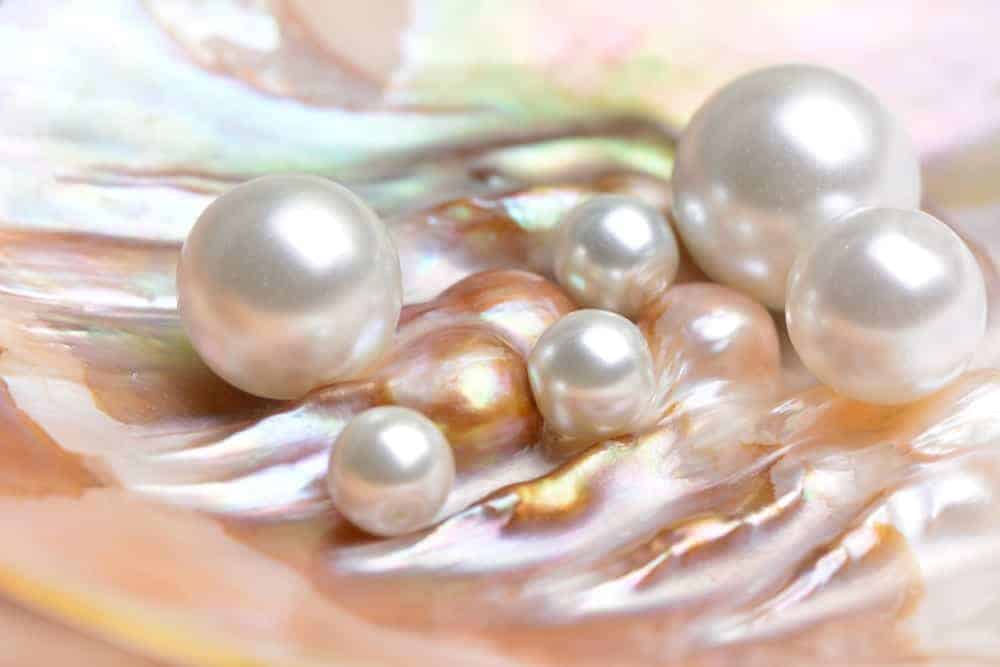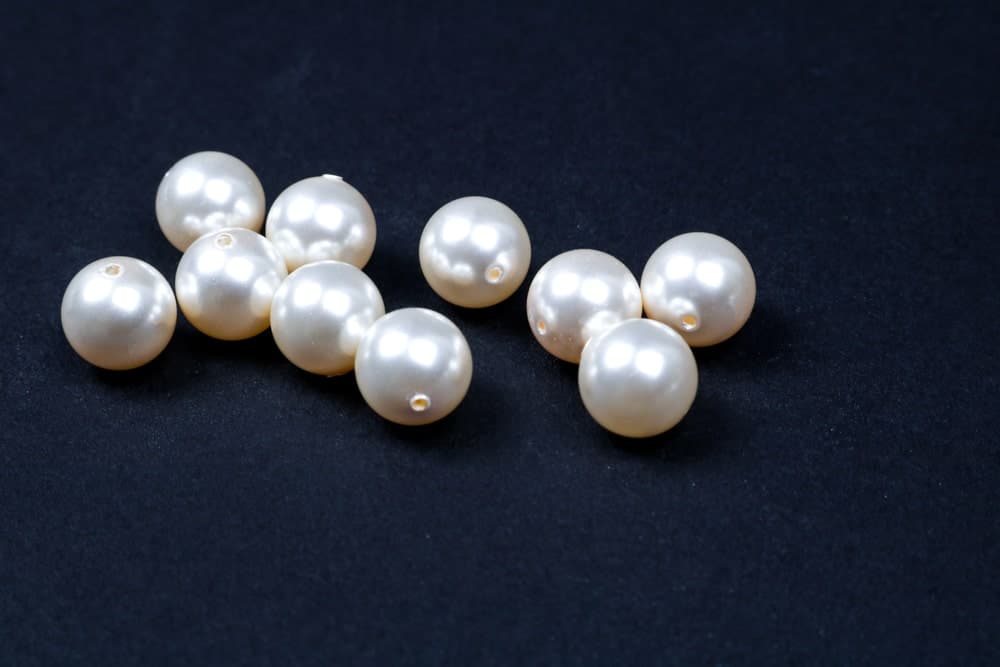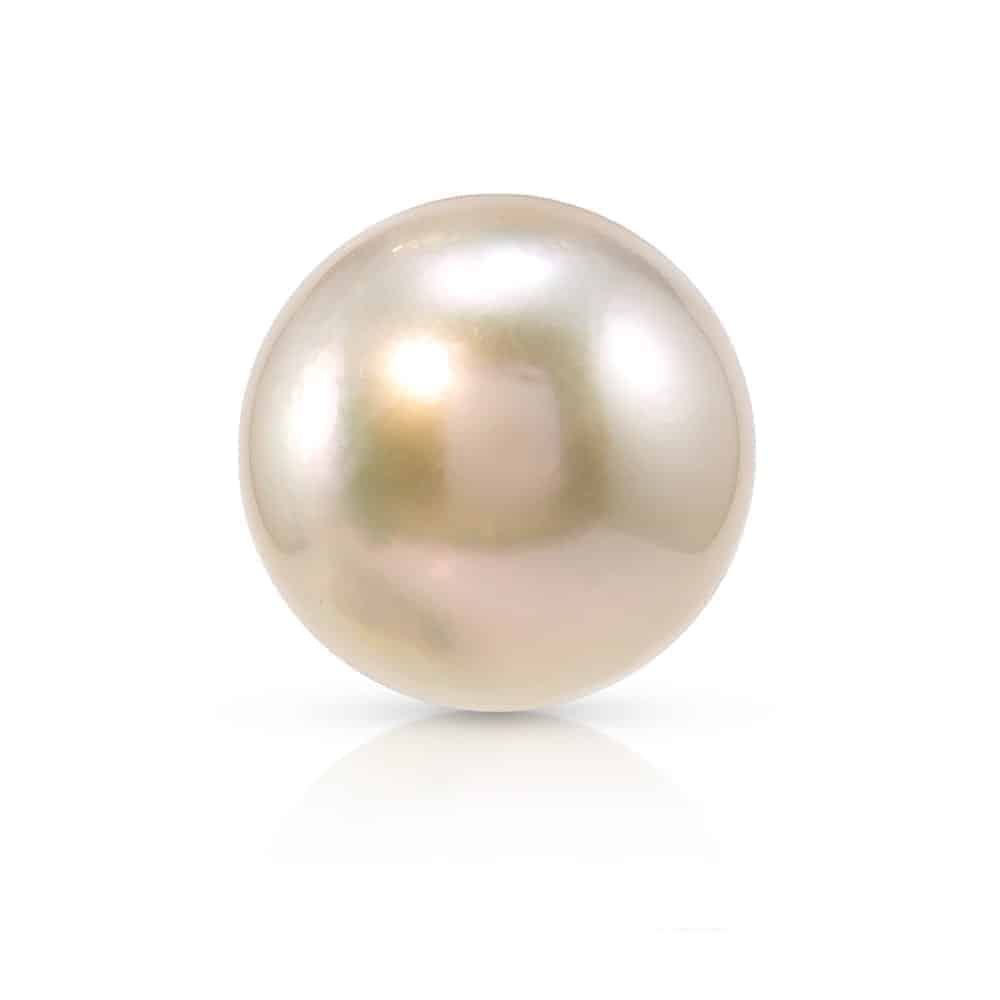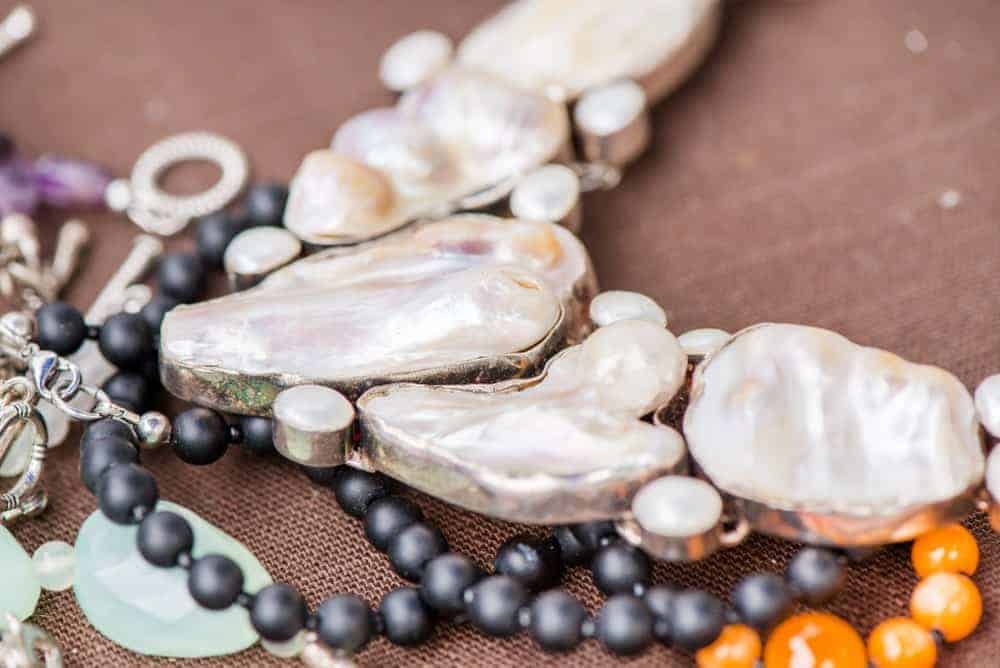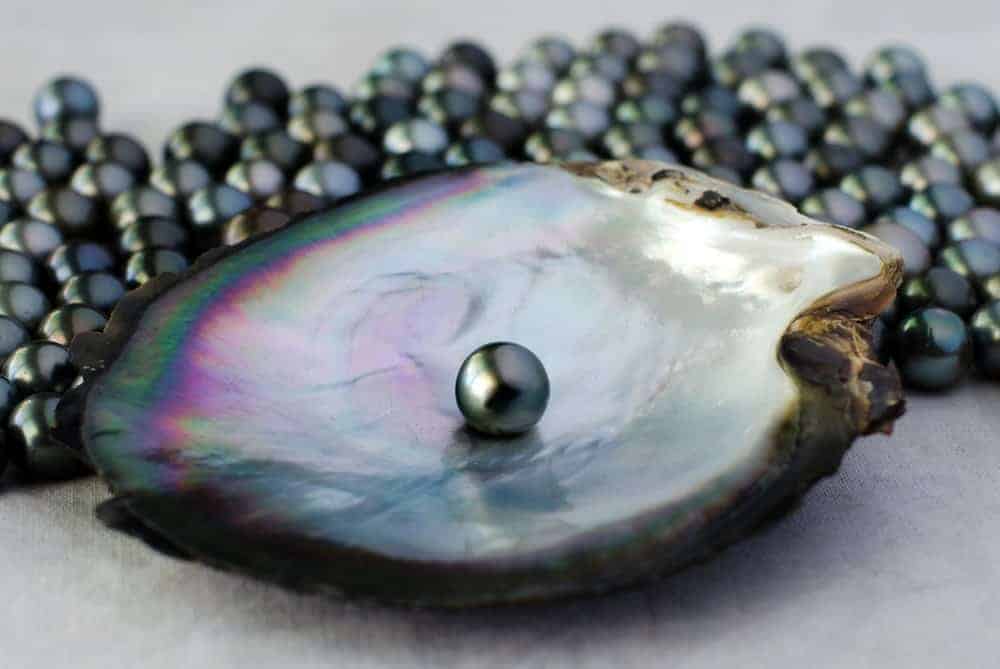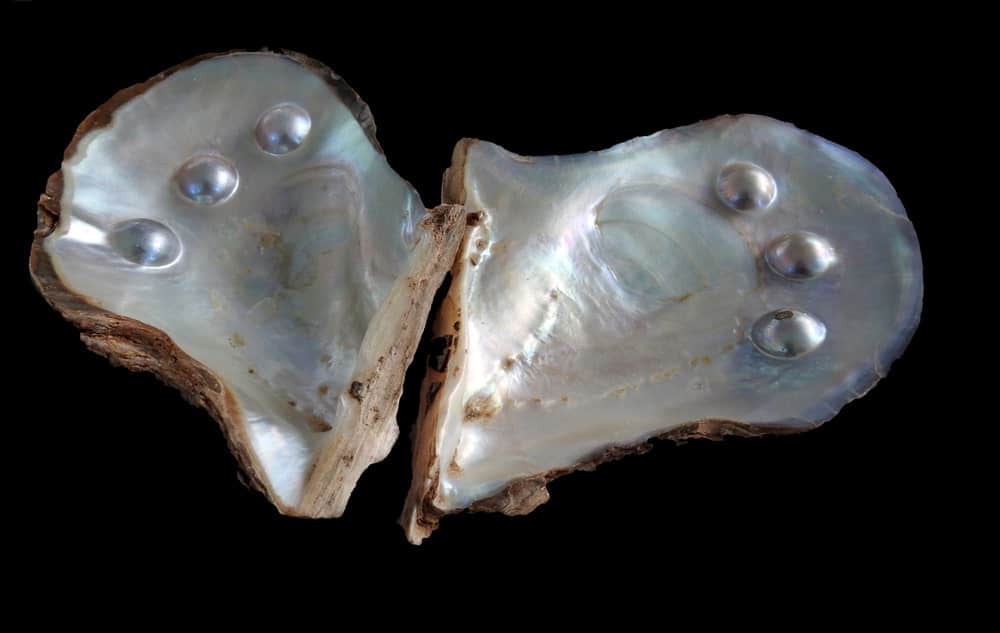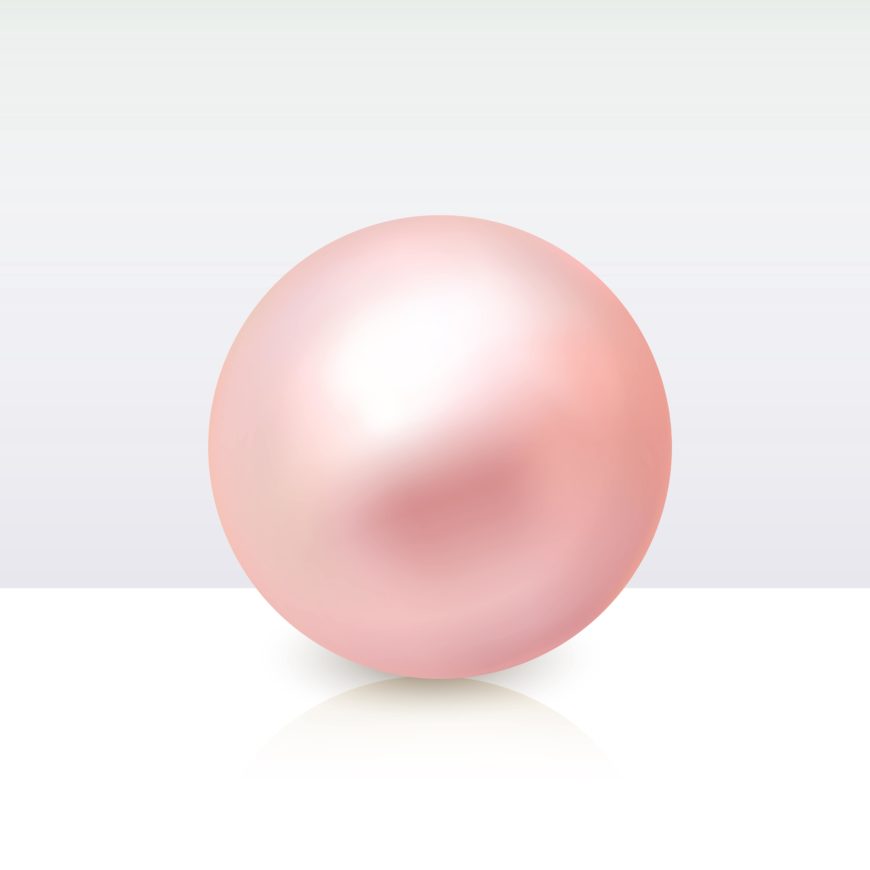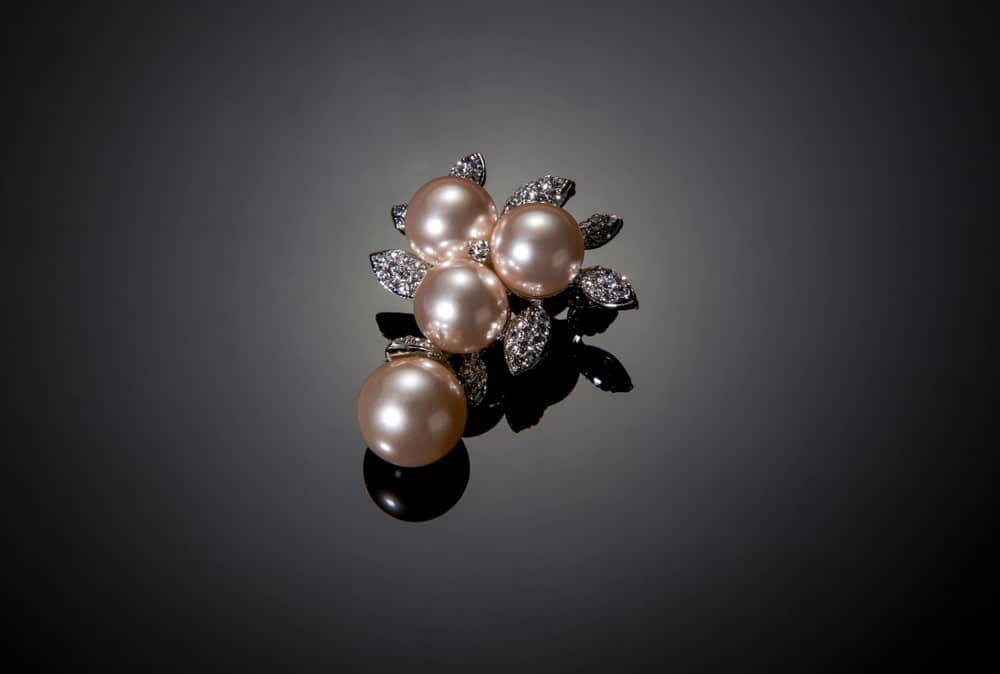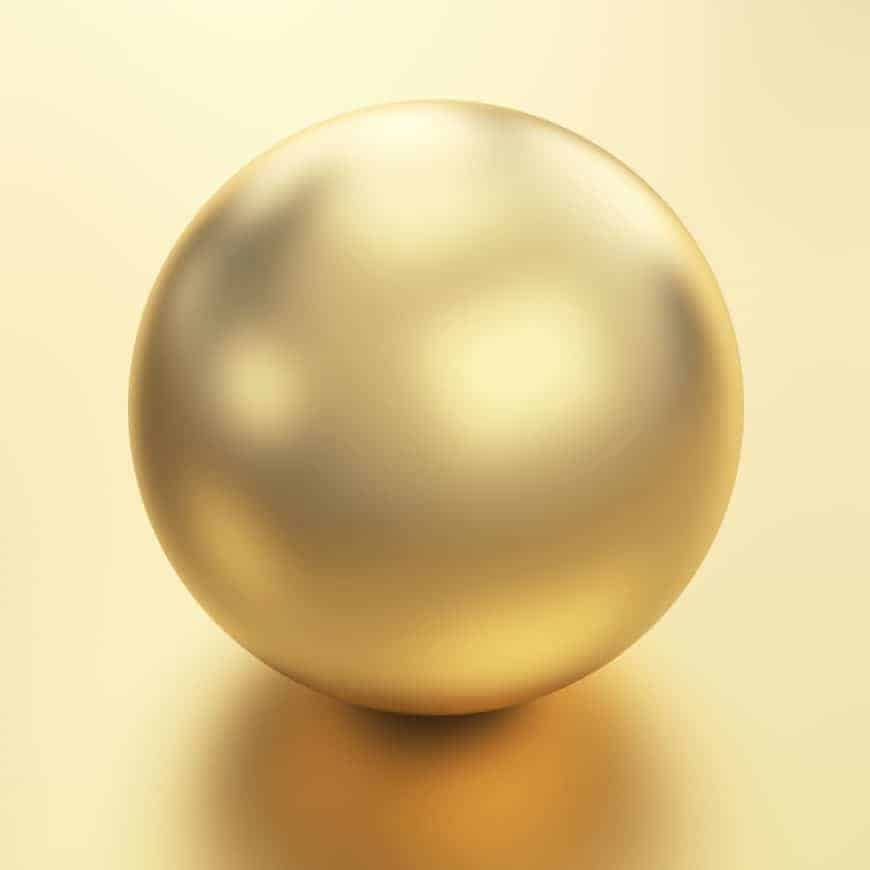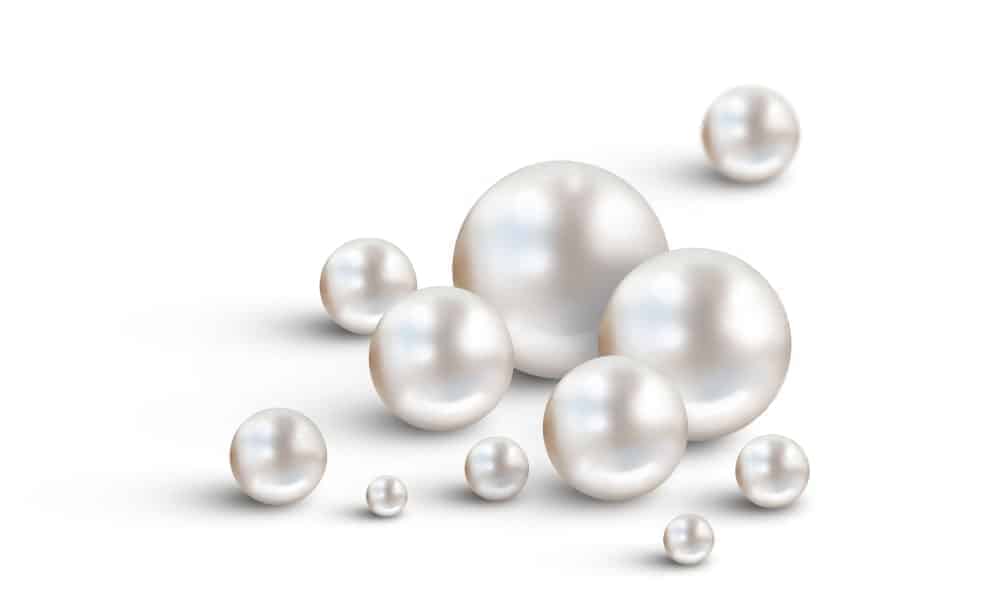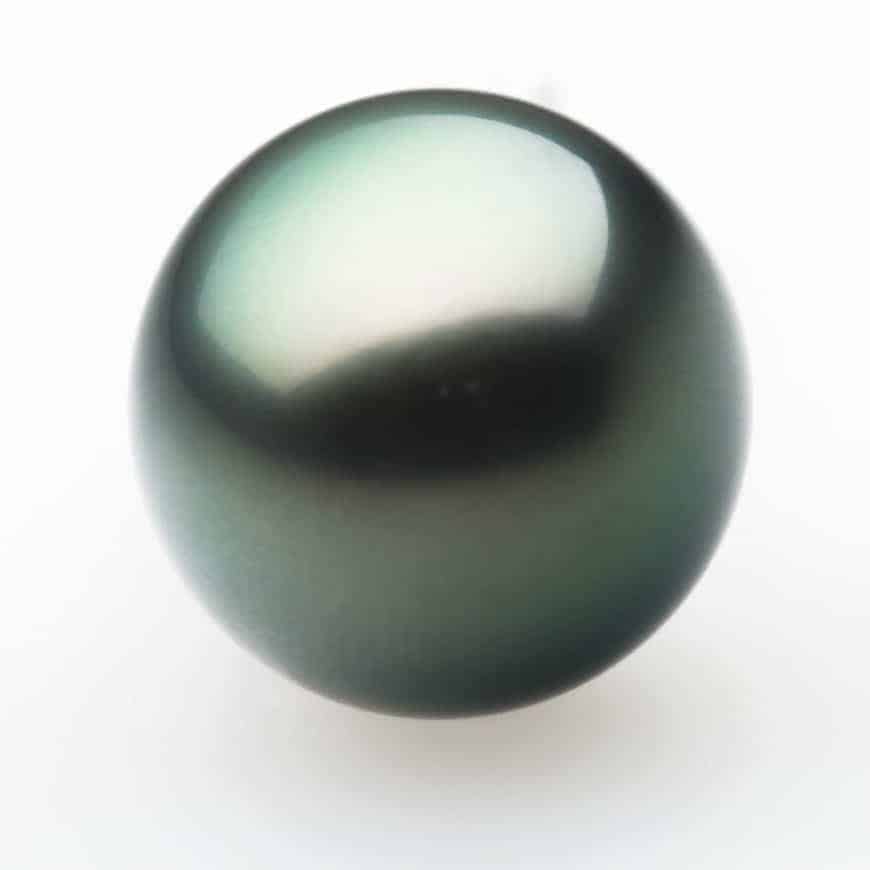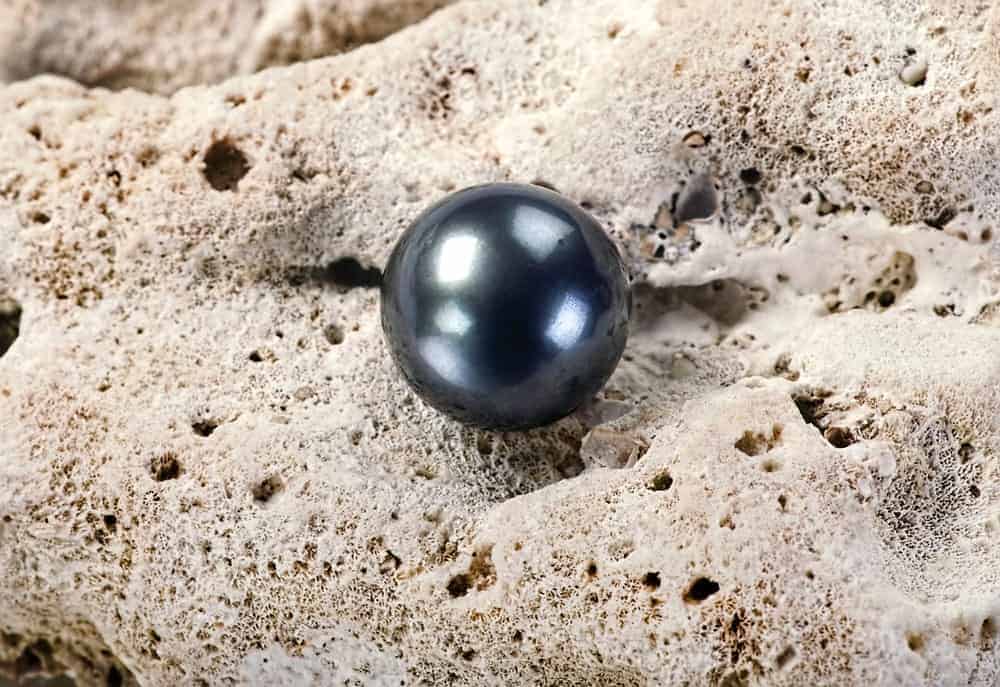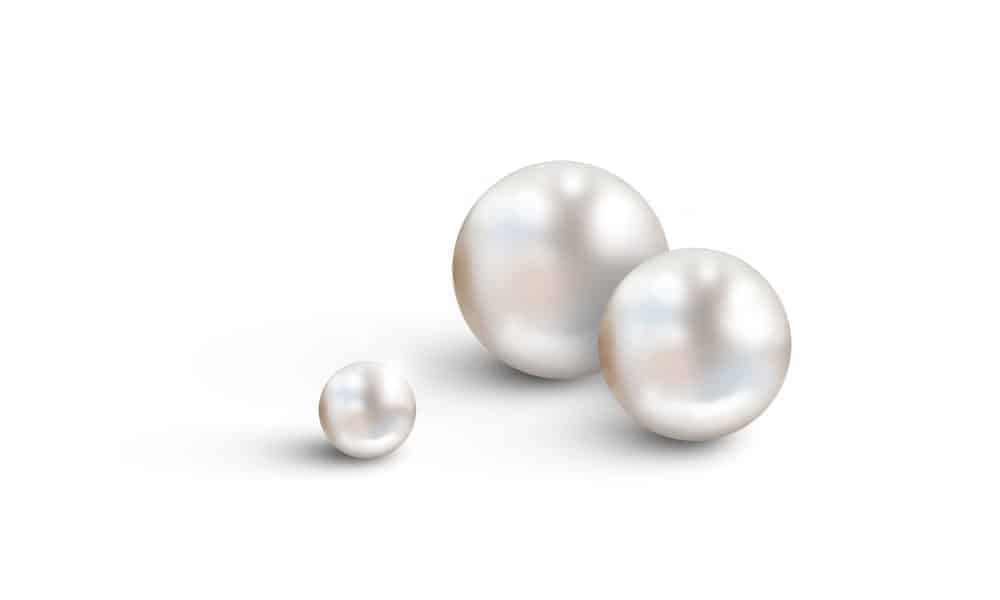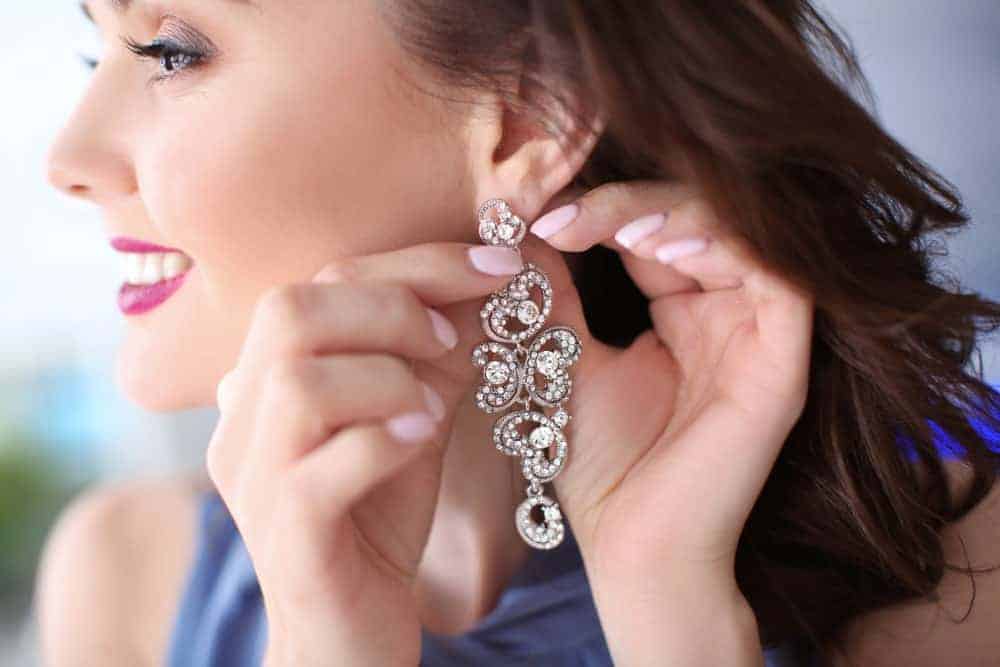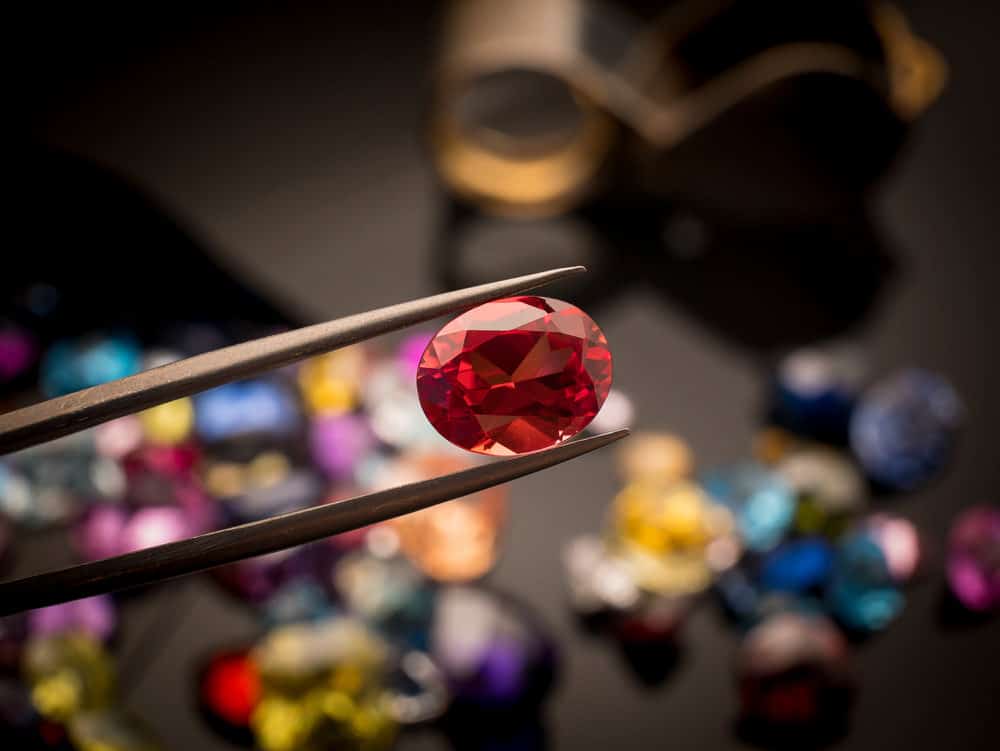Pearls are unique gemstones that have surpassed the test of time and are still highly-valued even in the modern day, so get to know the different types of pearls that vary in size, shape, color, and other distinctions.
For the longest time, pearls have been seen as a symbol of beauty, grace, and purity. Pearls are the gemstones that often get passed down from grandmothers to their daughters and then to their daughter’s daughter, but lately, they have are being used in modern fashion. There are many variations and types of pearls available and each has its own stand-out characteristics.
A pearl is a shiny, hard, rock-like object that forms in the soft tissue of a shelled mollusk. Similar to the shell of this mollusk, a pearl is made up of calcium carbonate (which is largely aragonite, but sometimes it can be a mixture of calcite and aragonite) in a subtle crystalline form. The ideal characteristics for this valued gemstone would be white, smooth, and round, but there are many shapes and colors. In the olden times, the finest quality pearls were highly valued. Because of that, pearls became a metaphor for admirable, rare, and valuable items.
Although, the most common and popular type of pearl is the typical white one, there are so many more different types of pearls that possess different shapes and colors. If you want to grasp a better understanding of this, keep on reading.
Contents
- Types of Pearls
- Akoya Pearls
- Bar Pearls
- Basra Pearls
- Biwa Pearls
- Black Pearls
- Blister Pearls
- Blue Abalone Pearls
- Blue Mussel Pearls
- Button Pearls
- Coin Pearls
- Carved Pearls
- Conch Pearls
- Edison and Ikecho Pearls
- Faceted Pearls
- Fireball and Flame Pearls
- Gem Studded Pearls
- Half Pearls
- In Body or In-Bodies Pearls
- Kasumiga Pearls
- Keshi Pearls
- Mabe Pearls
- Melo Pearls
- Quahog Pearls
- Rainbow Pearls
- Rosebud Pearls
- South Sea Pearls
- Tahitian Pearls
- Main Factors That Can Affect the Value of a Single Pearl
Types of Pearls
Pearls fall into two main categories; freshwater pearls and saltwater pearls.
Freshwater pearls are cultivated or found in freshwater mussels, which are in ponds, creeks, rivers, or lakes. These pearls are often irregular shaped, but sometimes, they can be round as well. Freshwater pearls are available in a diverse range of colors as well.
Saltwater pearls are cultivated or found in saltwater oysters that are in the sea, ocean, gulf, or bay. When these pearls are 100% natural, they are not round, but there are a few cultured ones that are known to have a smooth, round shape. As compared to freshwater pearls, saltwater pearls are more valued.
Each type of pearls can either be cultured or natural, and both the categories have various other pearls in them.
Akoya Pearls
Akoya pearls (or Pinctada fucata martensii) are the most popular type of pearls and they are found in the Akoya oyster. These pearls are commonly rounded. Most of these pearls are cultured and they are available in natural colors like yellow, light pink, and white. Japan is the hub of the most cultured Akoya pearls and they are larger than 7mm, whereas in other countries like Hong Kong, Korea, Sri Lanka, and China culture smaller ones.
Bar Pearls
These pearls are produced by inserting elongated or flat discs, which are made of plastic instead of the original mother of pearl beads.
Basra Pearls
A Basra pearl is found in the Pinctada Radiata oyster, which is found in the Persian Gulf.
Biwa Pearls
Biwa pearls are cultivated in Lake Biwa (the largest lake in Japan). Since these pearls are cultivated in a lake, they are referred to as freshwater pearls. Although this lake was the biggest cultivator of these pearls, it is too polluted now to cultivate them anymore. However, they still maintain their high-quality reputation, which is why certain dealers use the “Biwa” term to sell fake pearls to rookie buyers.
Black Pearls
Black pearls are produced in the La Paz pearl oyster (Pinctada mazatlanica), rainbow-lipped oyster (Pteria sterna) in the Eastern Pacific between Baja California and Peru or in the black-lip oyster (Pinctada margaritifera) in Western to Central pacific Ocean. All these oysters produce natural black colored pearls. Moreover, generally, the term “black pearls” refers to natural black colored pearls, pearls that have been dyed black, or any other pearl color that is dark.
Blister Pearls
A blister pearl is the type of pearl that gets embedded into the mother of pearl shell and it turns out looking like a blister. This pearl can be cut out and mounted and it does not show because there is no nacre. The good quality about this pearl is that it can be cultured in different shapes including a teardrop, heart, or square. The only thing that needs to be done is that a piece of shaped plastic needs to be glued inside the shell.
Blue Abalone Pearls
The pearls that come from the Abalone (this is a type of snail) are blue. However, until 1989, pearls were rarely ever found in the abalone. The chance of finding one of these abalone pearls is extremely rare. These snails are commonly found off the shores of Oregon, Mexico, Alaska, California, South Africa, New Zealand, Australia, Korea, and Japan. Although, these pearls are usually blue, they are available in a few other colors as well. They range from green, pink, purple, to silver and cream white. Natural abalone pearls are baroque shaped and they are used for exclusive jewelry.
Blue Mussel Pearls
These are the pearls that are produced in the blue mussel mollusk found in saltwater
Button Pearls
Button pearls are the kind of pearls that are round in shape but they are flattened like a button. The common ones are clam pearls and cassis pearls.
Coin Pearls
These pearls are cultured into the shape of a coin. Coin pearls are common amongst the younger generation as they add an element of contemporary fashion. Other common shapes of cultured pearls would be rectangle, square, stick, and diamond.
Carved Pearls
Pearl carving is becoming increasingly popular. People are getting meaningful things carved on pearls to add a level of enhancement and value. The best part about carving a pearl is that as it gets carved, a beautiful, underlying color is revealed.
Conch Pearls
Conch pearls are very rare pearls, one pearl is found in per 10,000 conchs. It is commonly retailed for $500 per carat, but the higher quality pearls can easily go over $2,000 per carat. A conch is a big sized, marine snail that is commonly found in the Caribbean. Although these conch pearls are often pink, they are available in brown and white colors as well.
Edison and Ikecho Pearls
An Edison and Ikecho pearls (also known as pearl experiments) are obtained by putting together drilled mother of pearl beads with a little part of a donor mantle tissue inside the mussel’s body. It is possible to produce 2 pearls at a time with this pearl experiment.
Faceted Pearls
A faceted pearl is a pearl that has many sections on its surface, similar to the surface of a diamond. With this faceting, there is a sparkling, dramatic effect that gets added to the pearl.
Fireball and Flame Pearls
A fireball and flame pearl are produced by putting the round mother of pearl beads inside the pearl sack of a mussel’s mantle. This pearl sack should already be present inside the mussel from the previous harvest. With this procedure, it is possible to produce more than 20 pearls at a time.
Gem Studded Pearls
Gem studded pearls are obtained by drilling holes inside the pearl and adding gemstones to it. This does not only accentuate the natural beauty of the pearl but it can eliminate any flaws that might have been present on the surface of the pearl. Sometimes, pearls are added with other gemstones to produce beautiful jewelry pieces as well.
Half Pearls
These are the pearls that have been cut from one side so any present blemishes on its surface could be removed. Most of the time, half pearls are mounted so they look like a full pearl. If a small part of the pearl has been cut, it is called a three-quarter pearl, and when it gets mounted, it looks like a full pearl.
In Body or In-Bodies Pearls
The way this pearl is produced is quite similar to the process of the Edison and Ikecho pearls. At a single time, it is possible to produce 2 pearls.
Kasumiga Pearls
A Kasumiga pearl is a pearl that gets cultured in the Lake Kasumiga, located north of Tokyo. The trademark name of these pearls is Kasumiga pearls, but they are also called Kasumi pearls. They are produced in a hybrid mussel Hyriopsis schlegelii X Hyriopsis cumingii. These pearls were introduced in the market during the 1990s but they were available in small quantities only. These pearls range from pink and purple to gold and white. Kasumiga pearls are considered to being large-sized pearls as they measure from 11 mm to 16 mm.
Keshi Pearls
A Keshi pearl naturally grows in the abductor muscle or the soft tissue of a cultured mollusk that is pearl bearing. The word Keshi has 4 different meanings.
- Natural seed pearls. Even before pearls were being cultivated, the word Keshi as used to describe small natural pearls.
- Chinese reborn pearls. These pearls are very much like Keshi pearls and they are commonly obtained in the second harvest.
- Accidents of black pearl oyster and South Sea culturing process. Naturally occurring pearls that are produced during any one of the three harvests of one oyster.
- Accidents of cultured freshwater pearls. These pearls are usually found in the second and third harvest.
Mabe Pearls
After the preparation of blister pearls and they get mounted onto jewelry, they are known as mabe pearls. After they are removed from the shell, the soapstone and plastic are removed and the back is filled with wax or paste and then finished off with a mother of pearl backing. Mounted mabe pearls often look just like a blister or half pearls, which is why these names are used interchangeably.
Melo Pearls
A Melo pearl is a naturally occurring but rare kind of pearl that grows inside sea snails called melon shells, boat shells, or bailer shells that are in Malaysia, in the South China Sea, or Singapore. These pearls are usually quite large and they weight 200 carats. They are available in yellow, brown, and orange colors and they have a unique wavy pattern on them.
Quahog Pearls
A quahog pearl is a dark-colored pearl that is found in hard clam also referred to as a hard shell, cherrystone clam, quahaug, round clam, and little neck. This hard clam is an edible bivalve mollusk that is commonly on the shores of North America. A quahog pearl is one of the rarest types of pearls so they can be quite expensive.
Rainbow Pearls
Pearls that have 3 or more color variations in them are referred to rainbow pearls. These pearls are usually produced in the Western winged (or rainbow lipped) pearl oyster (Pteria sterna) and they are native to the Pacific Coast, California, Peru, and Mexico. When these pearls are developed naturally, they can vary from being the shape of seed to being 20 carats and they range from being $100 to $2000 per carat. Because they are cultured (sometimes) they are 7 mm to 12 mm in diameter and inexpensive compared to the natural rainbow pearls.
Rosebud Pearls
Rosebud pearls are the pearls that have small bumps on their surface which makes them look like rosebuds. Sometimes, they are even referred to as strawberry pearls because the bumps on the outside resemble the bumps on a strawberry.
South Sea Pearls
South Sea pearls are the large yellow or white pearls that are produced in the Pinctada maxima oyster. This oyster is native to the South Seas and is referred to as a yellow lip oyster or silver lip oyster. There are a few South Sea pearls that are found in the salty waters of Indonesia, Philippines, French Polynesia, and Australia. These pearls vary in size and they are often 9 to 19 mm.
Tahitian Pearls
When it comes to their cultured pearls, Tahiti has some seriously strict exporting laws. The reason for this is that they only want to sell Tahitian pearls that are of the highest quality. A natural and authentic Tahitian pearl is produced in a black lip oyster and it possesses a beautiful deep black color. This is one reason why they are expensive and so rare.
Main Factors That Can Affect the Value of a Single Pearl
The prices of a pearl are solely based on the different pricing systems set by online retailers or individual store owners. However, there are a few main factors that can affect the value of a pearl. Therefore, it is important to be aware of these factors so you can purchase a pearl at its price instead of overpaying for it.
Keep in mind, the value of a pearl is not based only on one of the factors mentioned below. When you are trying to determine the value of a pearl, make sure you are taking all the factors in mind before making a judgment that could possibly be wrong.
The Shape of the Pearl
Natural pearls are available in different sizes and different shapes, but when one pearl is round –naturally-, there is a high chance that it will be priced higher as well. Because it is almost impossible for an oyster to create round gemstones, it is rare to find a round pearl. However, sometimes, these round pearls do exist, and they are priced higher, obviously.
The Surface of the Pearl
There is not one natural pearl that will have a surface that is 100% free from flaws because they are all produced by living creations. However, if the number of nicks, cracks, imperfections, or other flaws on the surface is less compared to one that has visible flaws, the pearl will be more expensive and valued.
The Pearl Luster
If you are buying a pearl online, you need to make sure you are calling the online retailer and discussing the pearl luster because it is important. The luster of a pearl would be the shine or mirror-like effect that is visible on the surface of the pearl. The higher the quality of the pearl, the more lustrous it will be. The luster adds a level of attractiveness to the pearl, making it hard for the human eye to look away. If a pearl has a high luster value, it will be pricier.
The Size of the Pearl
The size of the pearl is extremely important when it comes to the price of each gem. Back in the day, the larger pearls were what older women would wear. But, now, all women stock up on big-sized pearls, while younger girls wear small-sized pearls. Make sure you are checking the size of the pearl before paying a fortune for it.
There is no doubt in saying that pearls are the ultimate gemstone that can effortlessly add sophistication and class to any individual’s outlook especially the ones that how to rock them. From the different variations to the different sized pearls available, there is something for everyone. If you are planning on buying a pearl for yourself or for your loved one, make sure you are doing your research.
According to their fashion sense and personality, choose what type of pearl you would want them to rock. Even after getting a pearl (or pearls) make sure you are taking care of it. By following a few pearl caretaking procedures, you will be able to make sure your gemstone stays shiny and looks valuable at all times.

